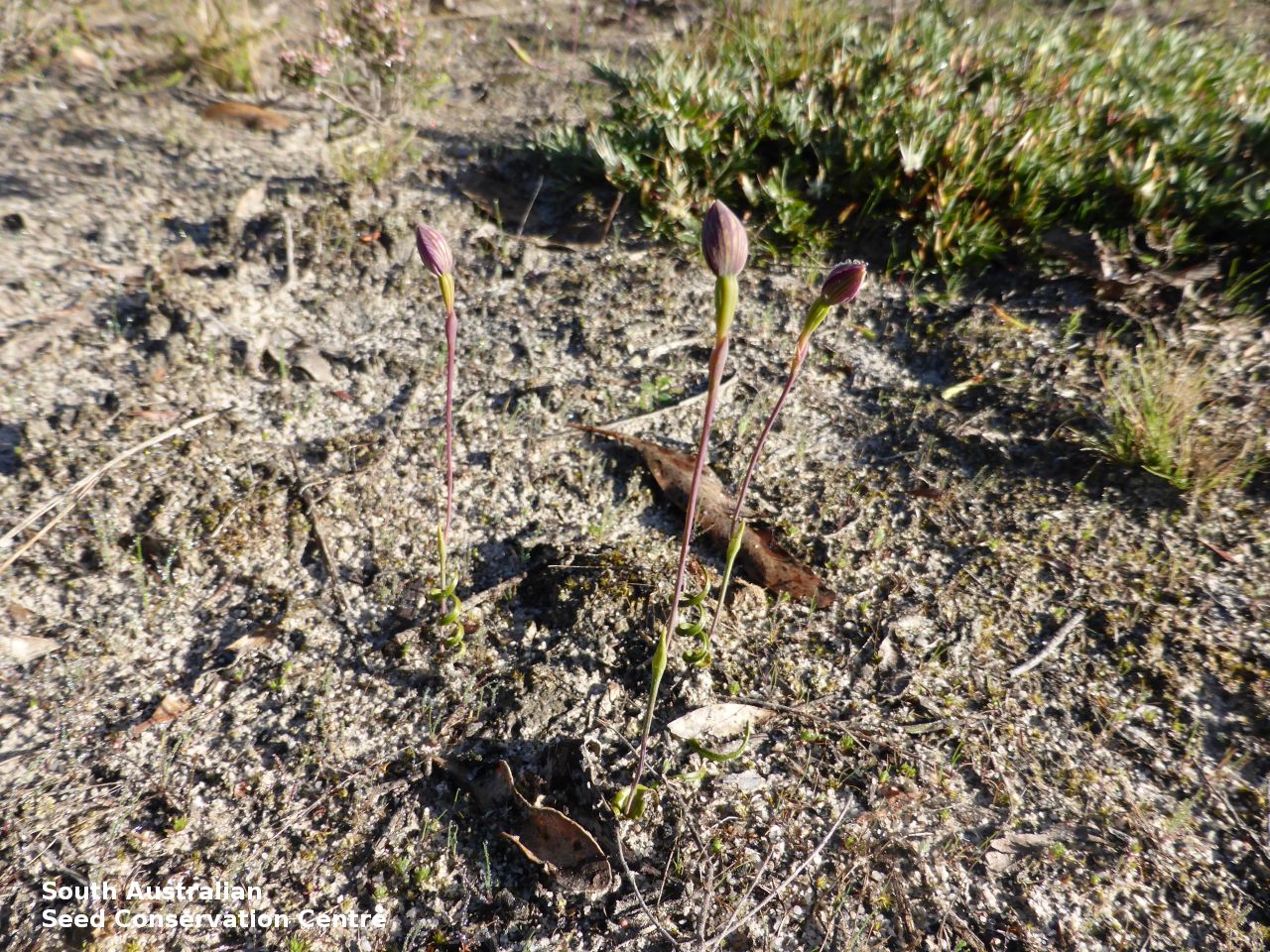
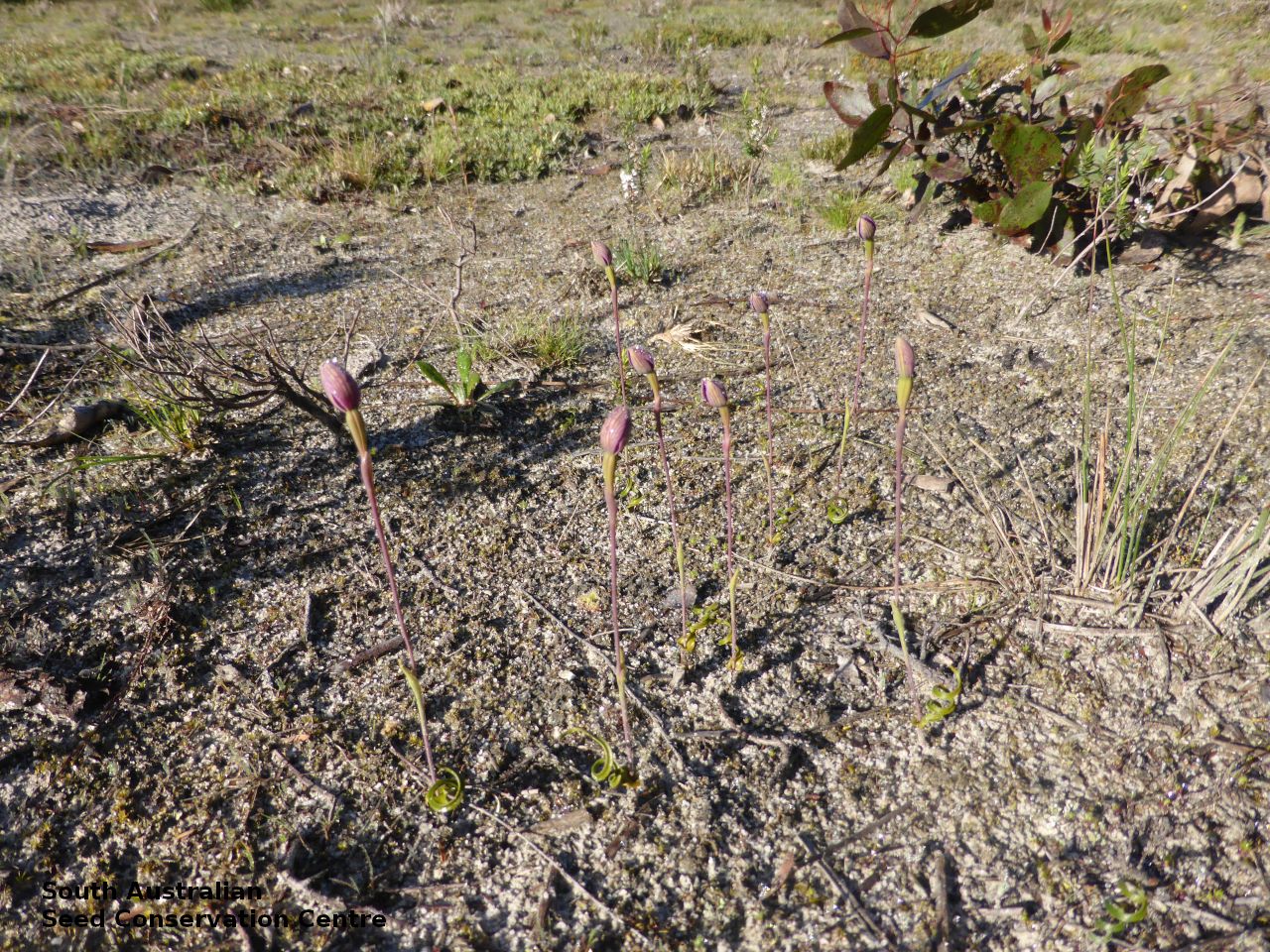
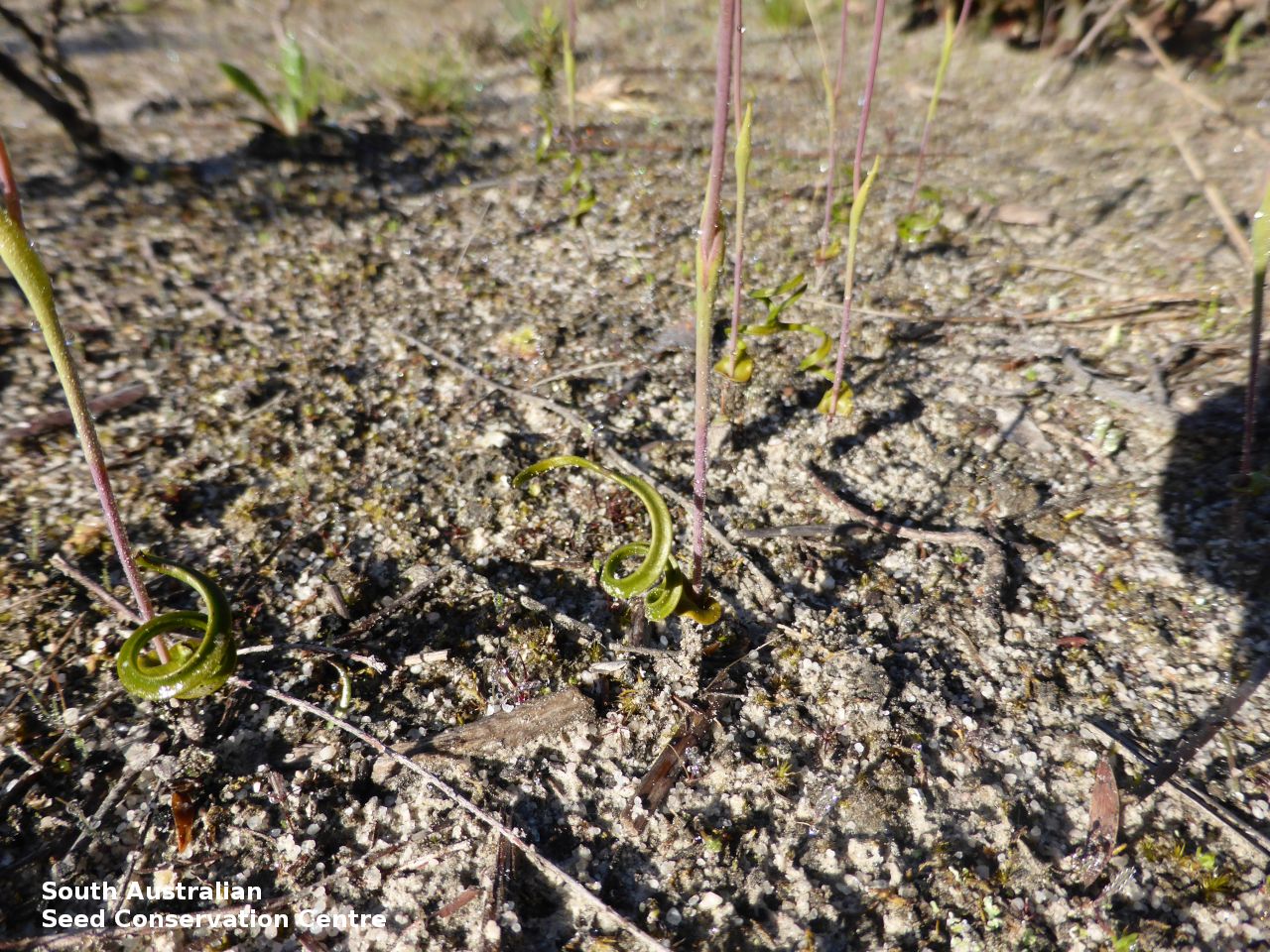
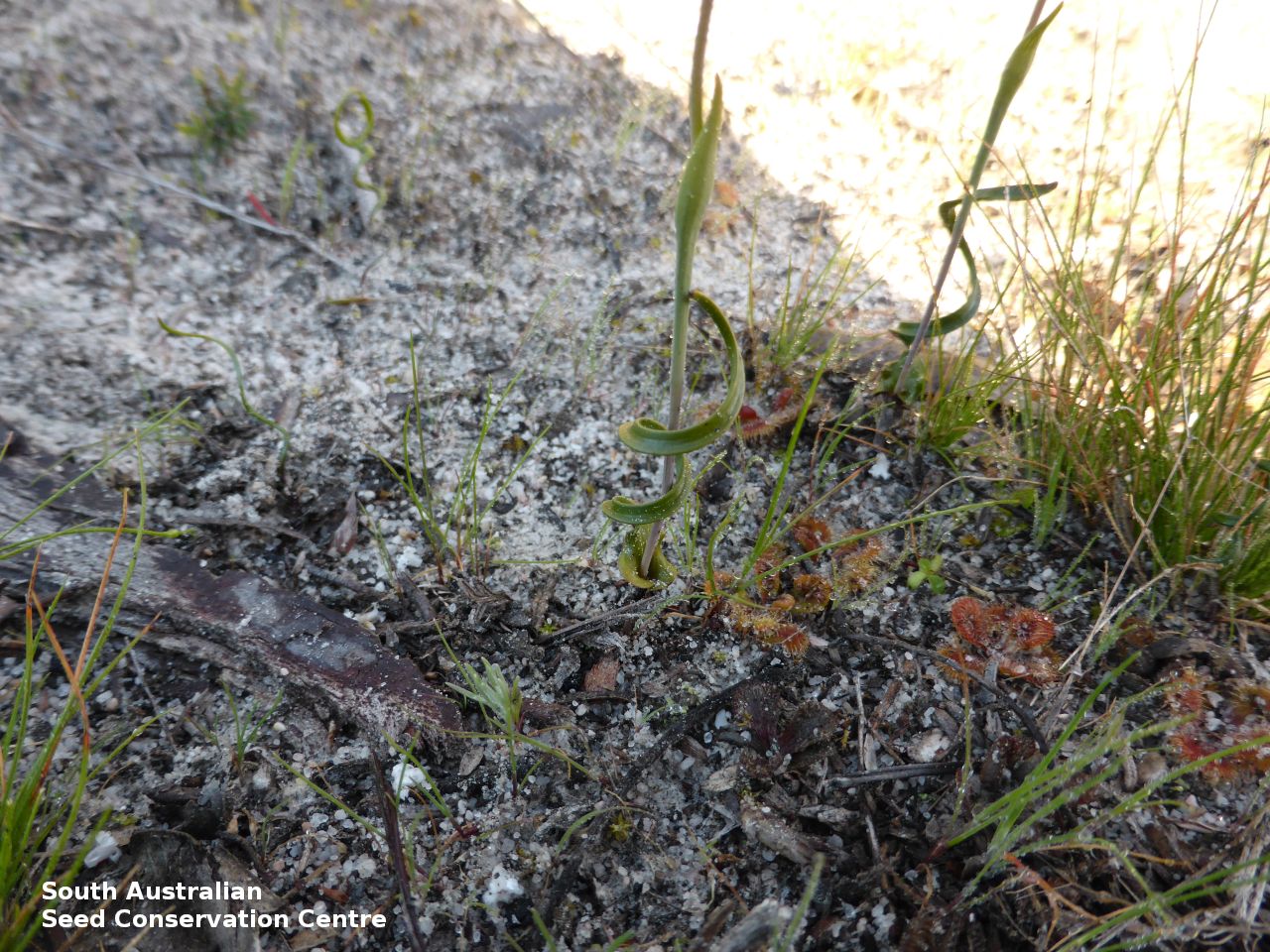
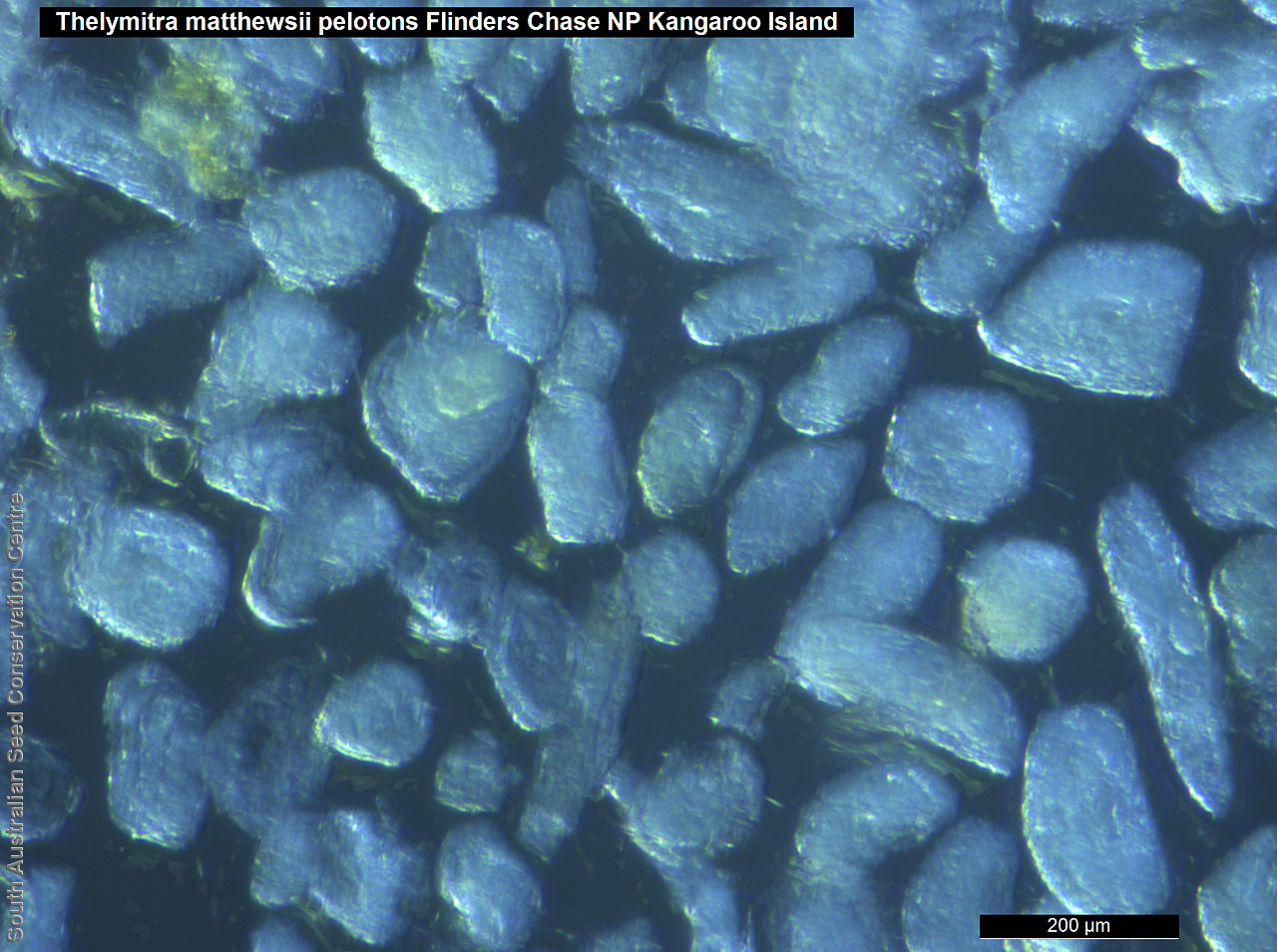
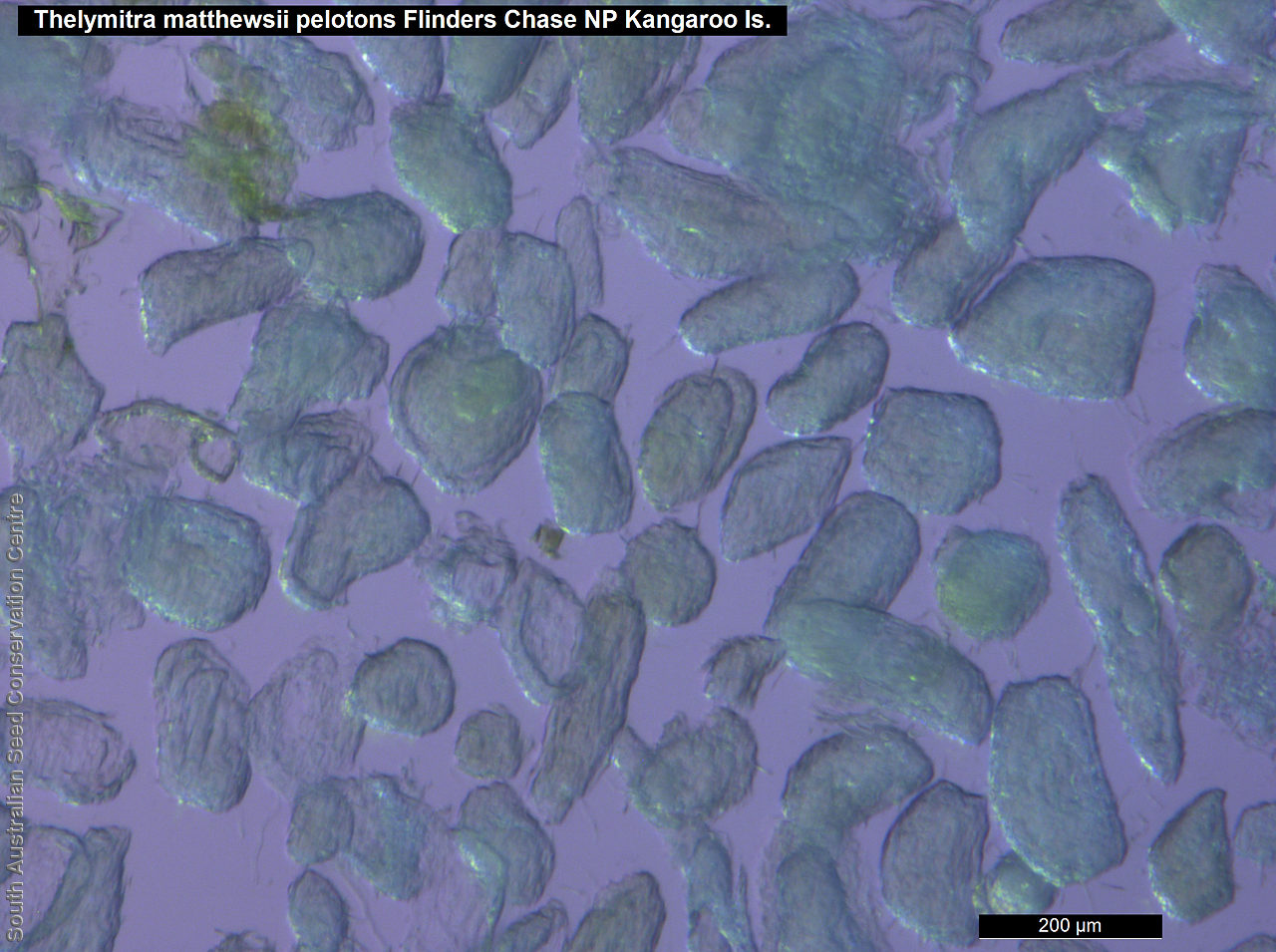
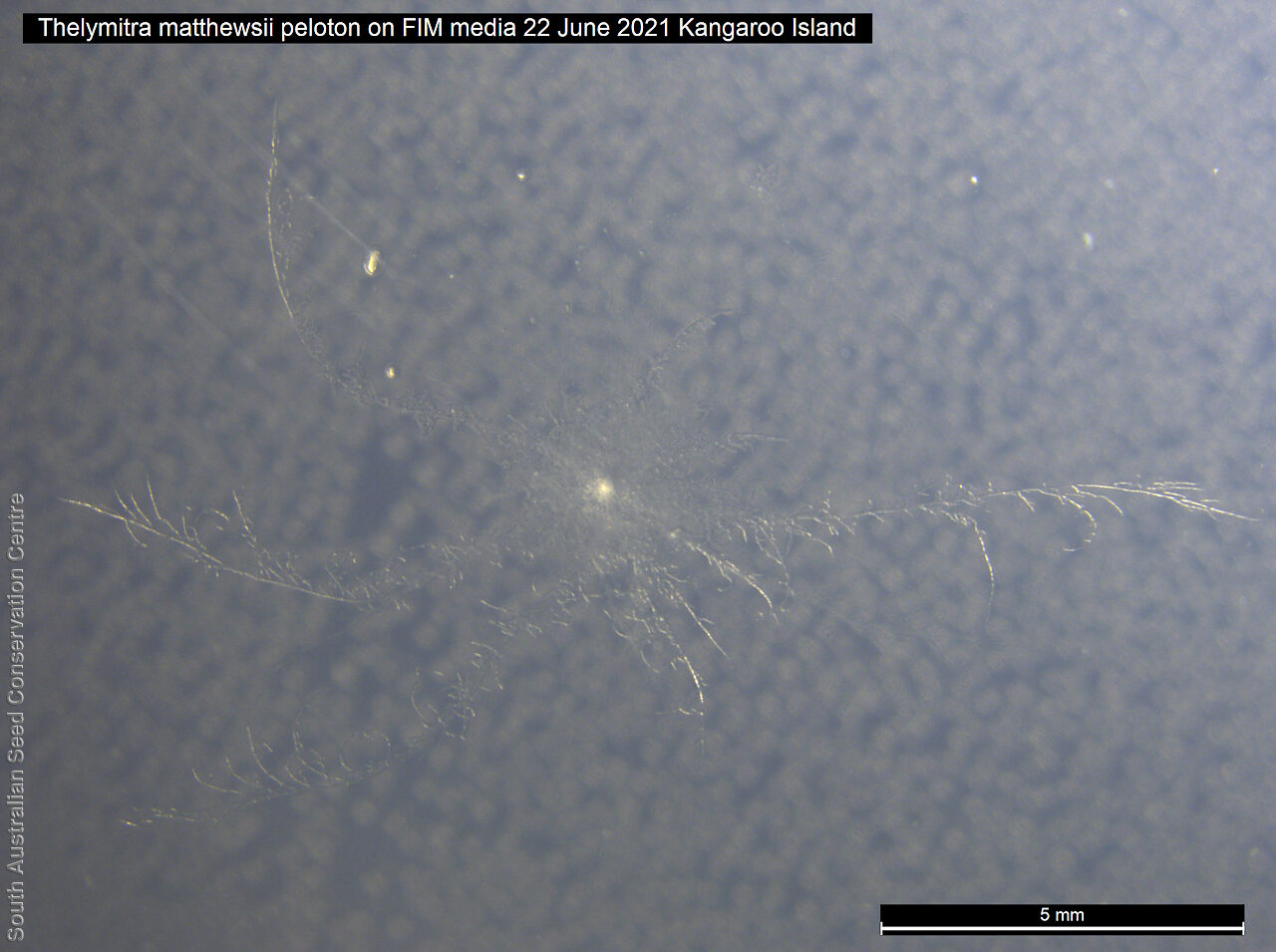
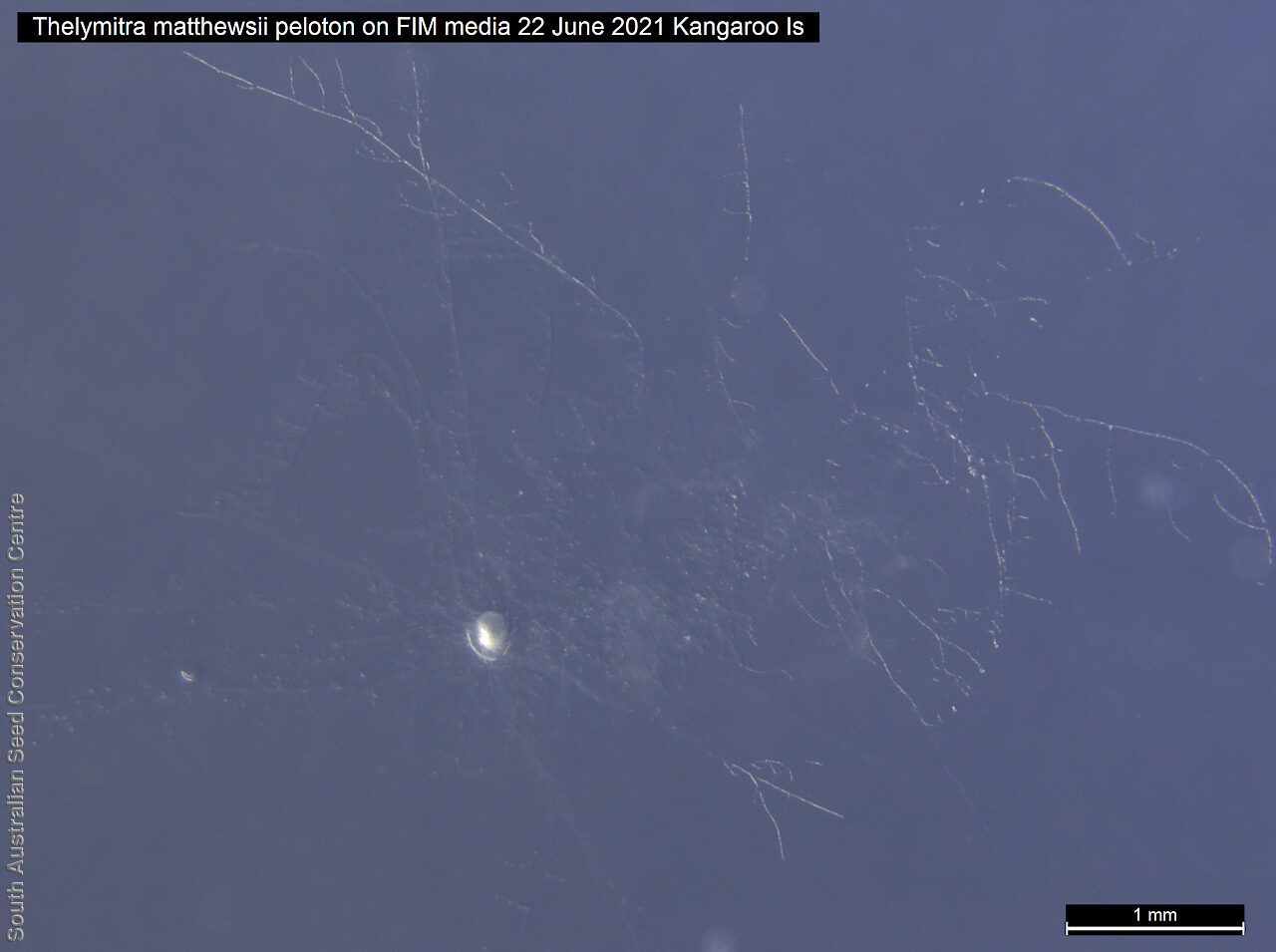
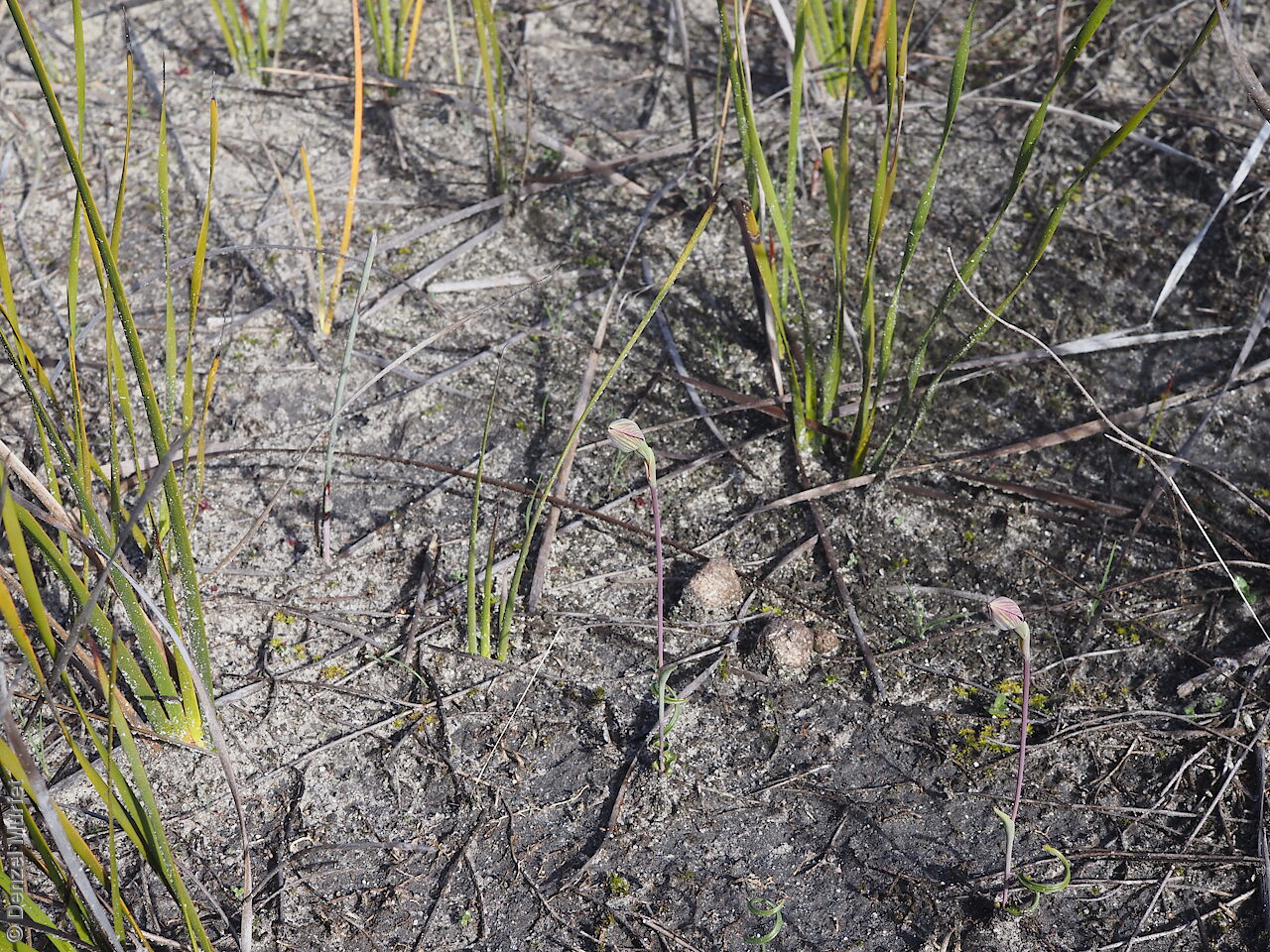
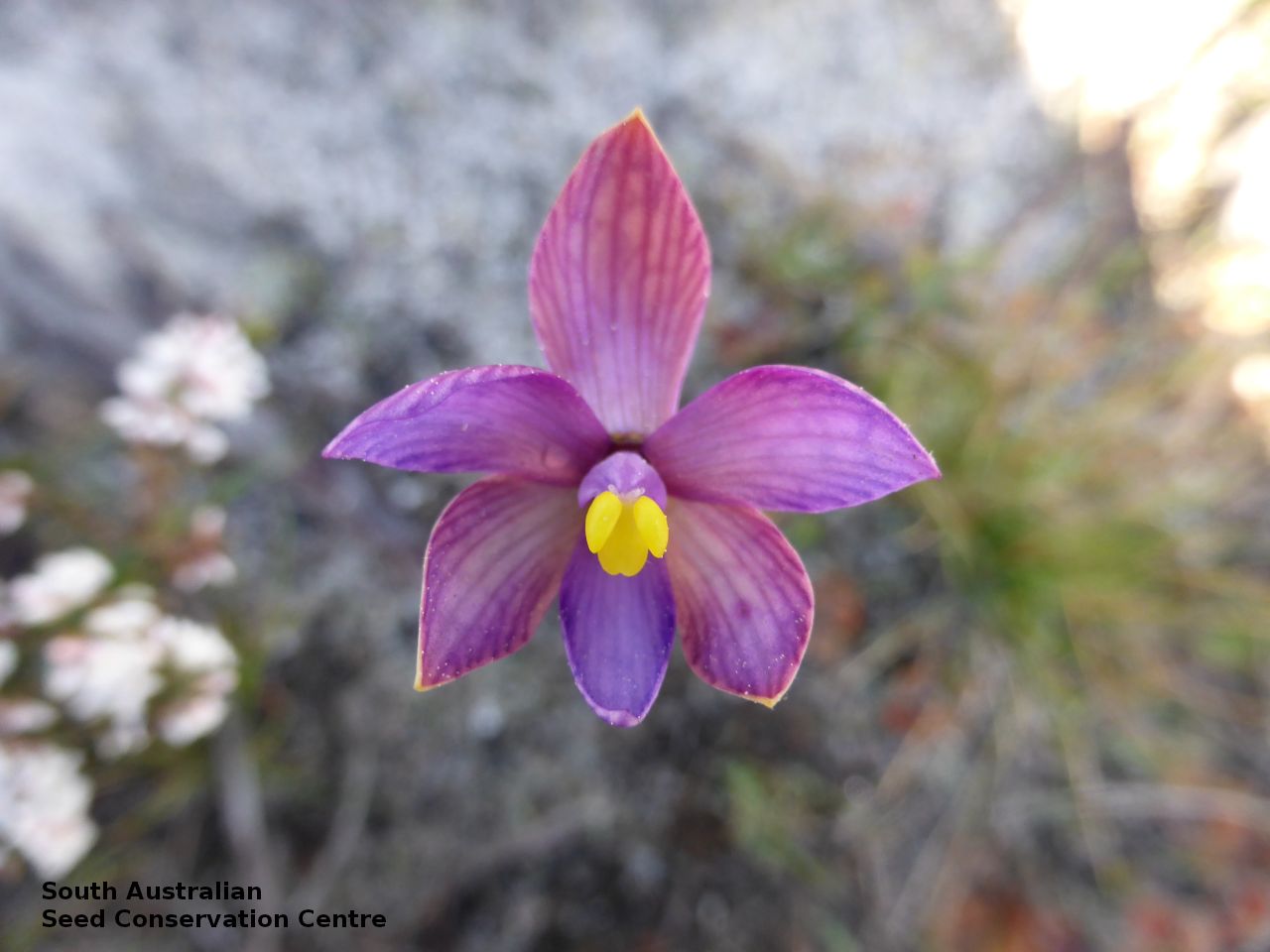
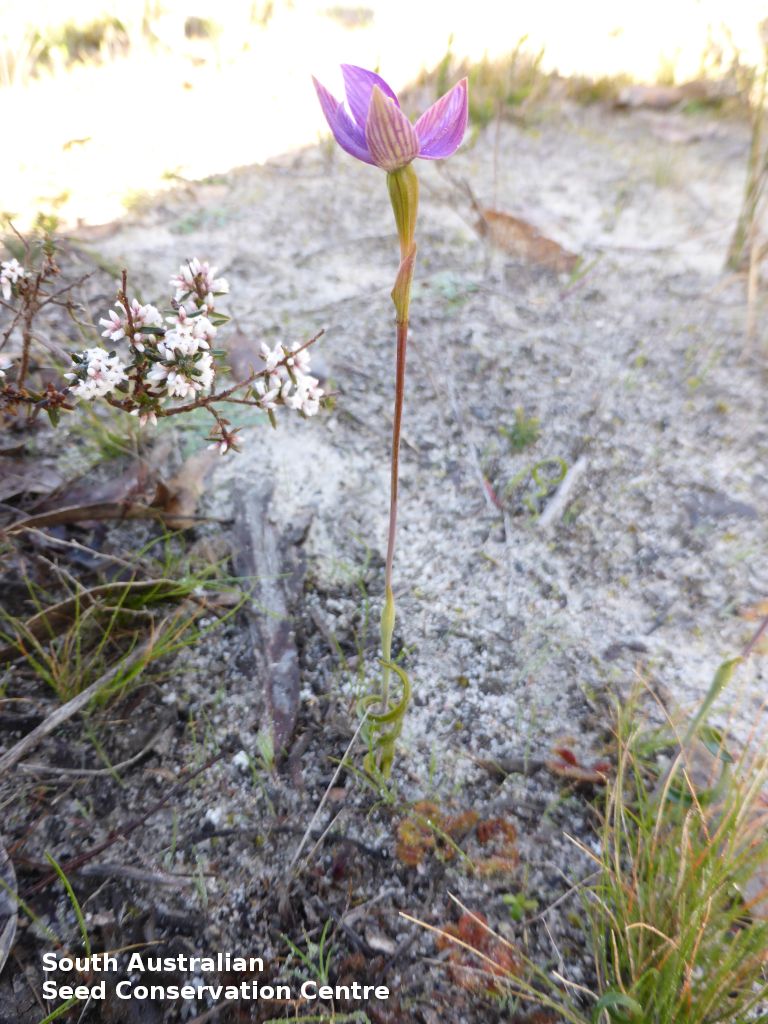
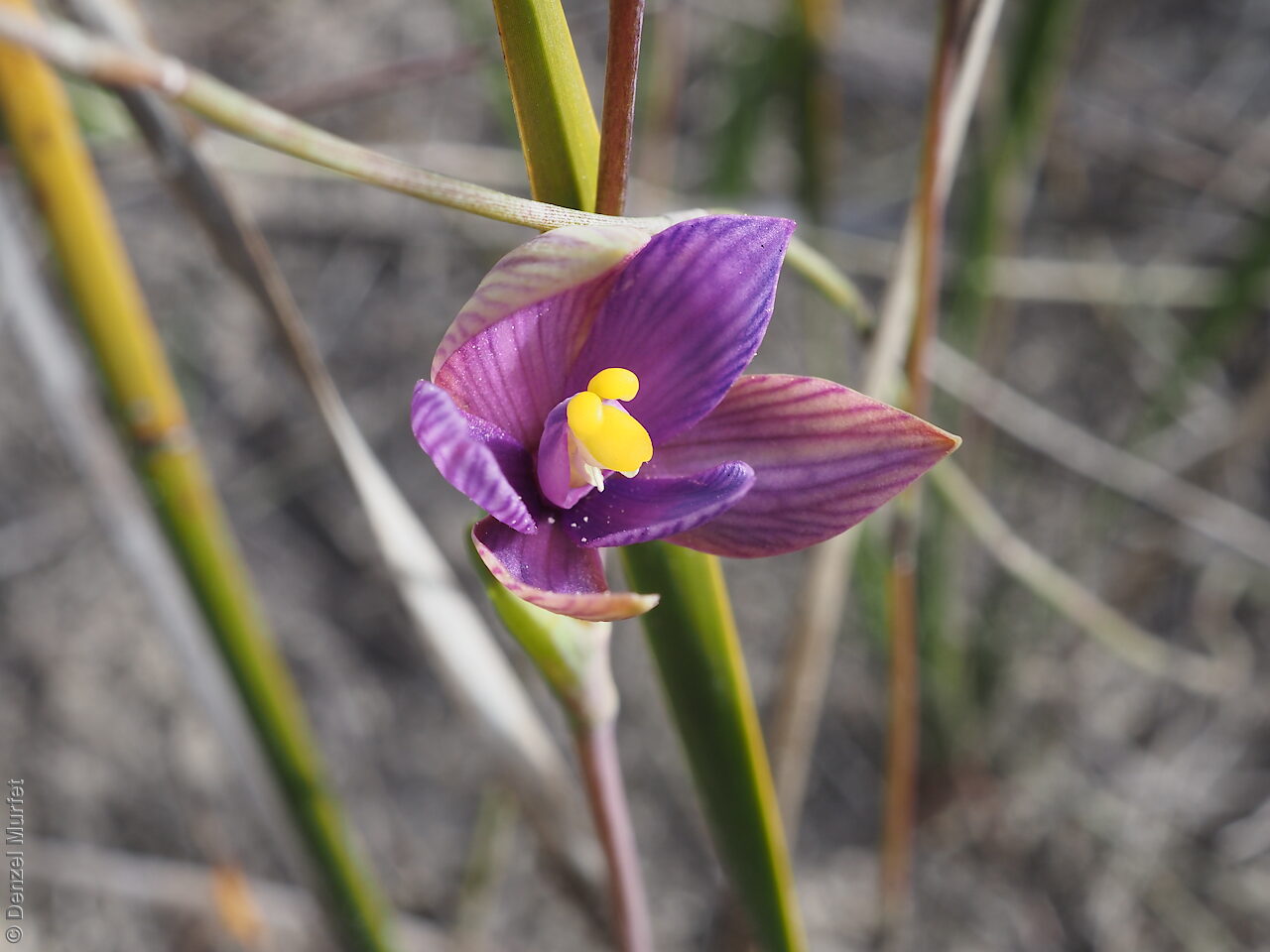
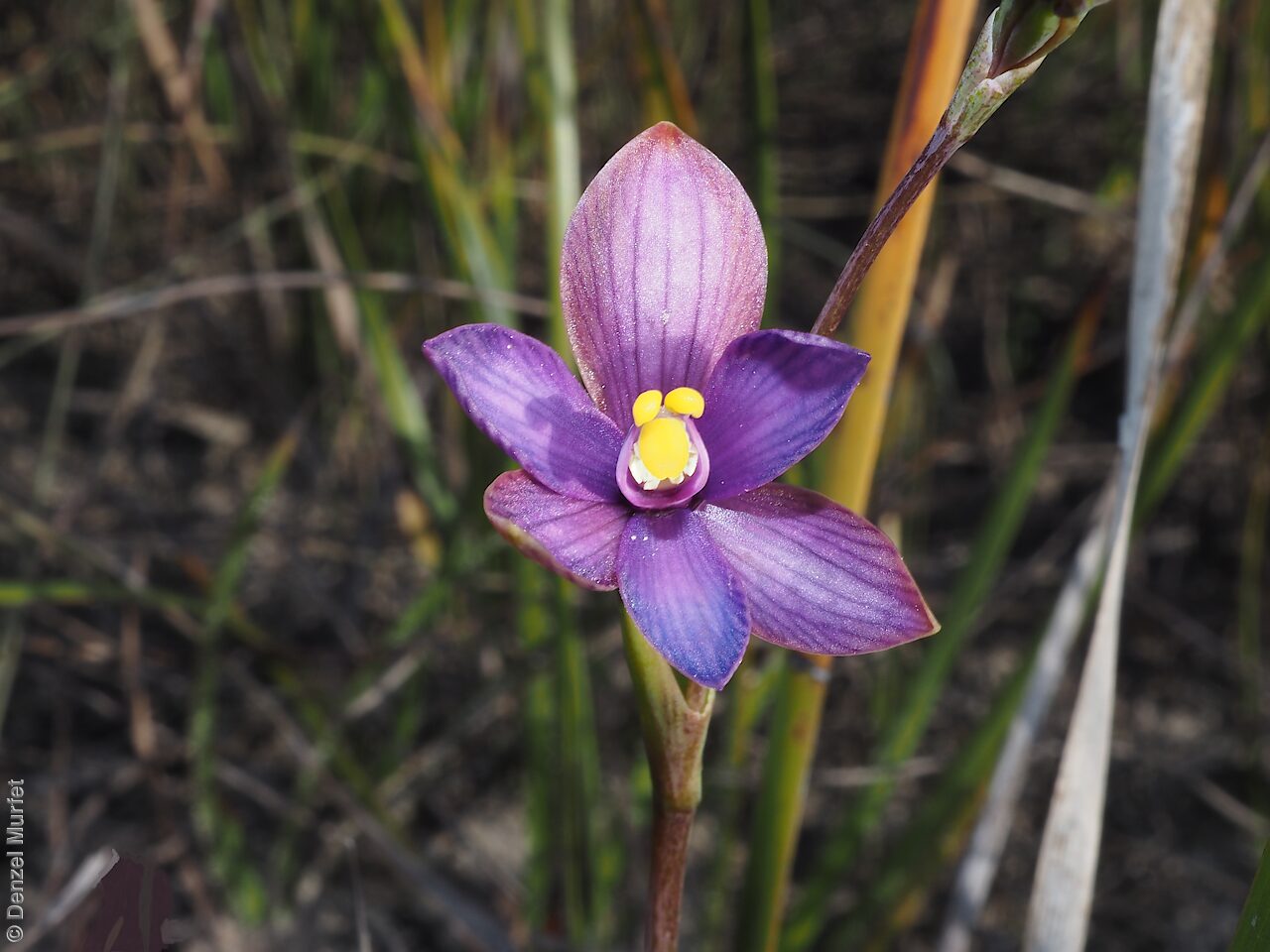
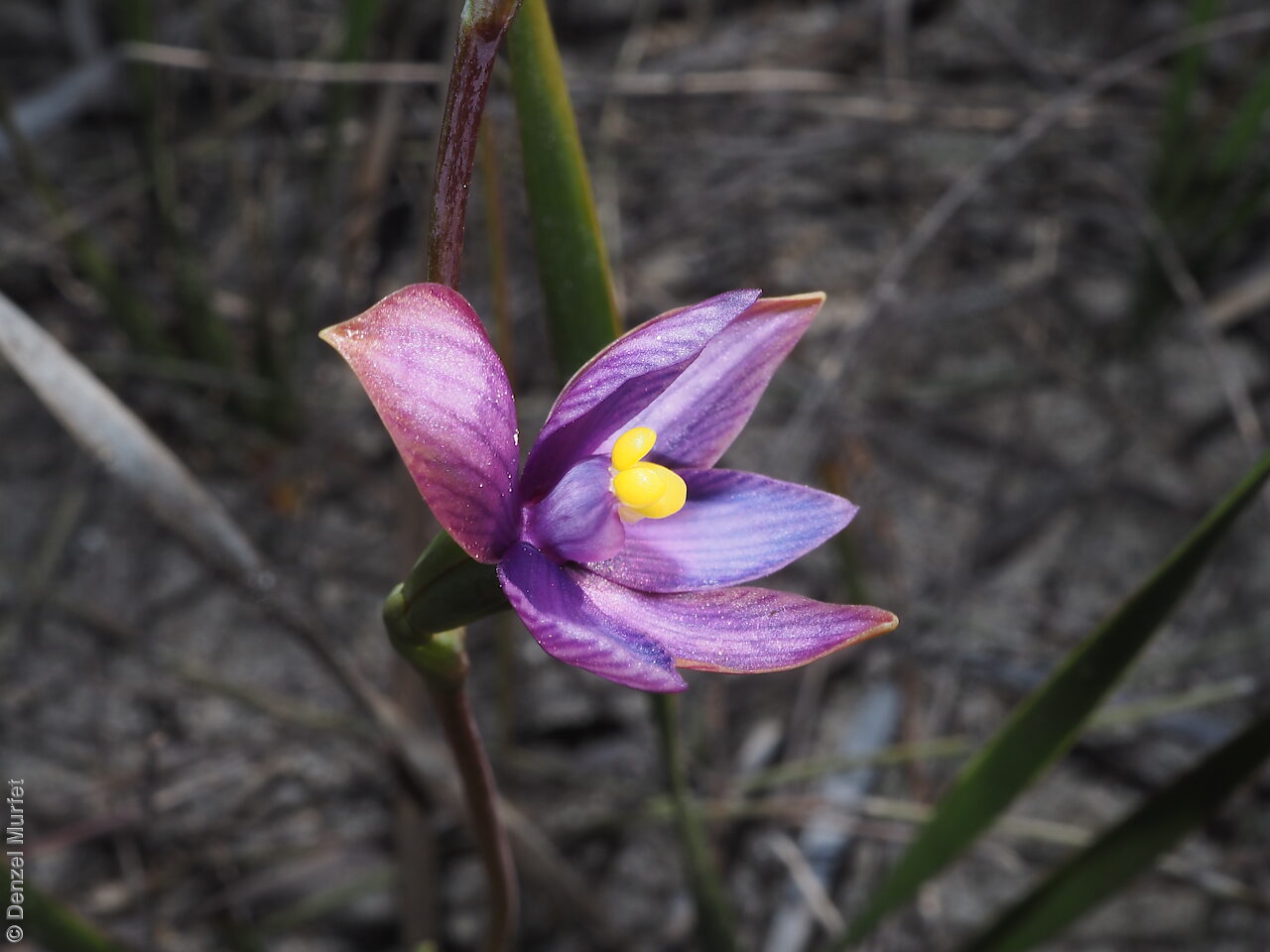
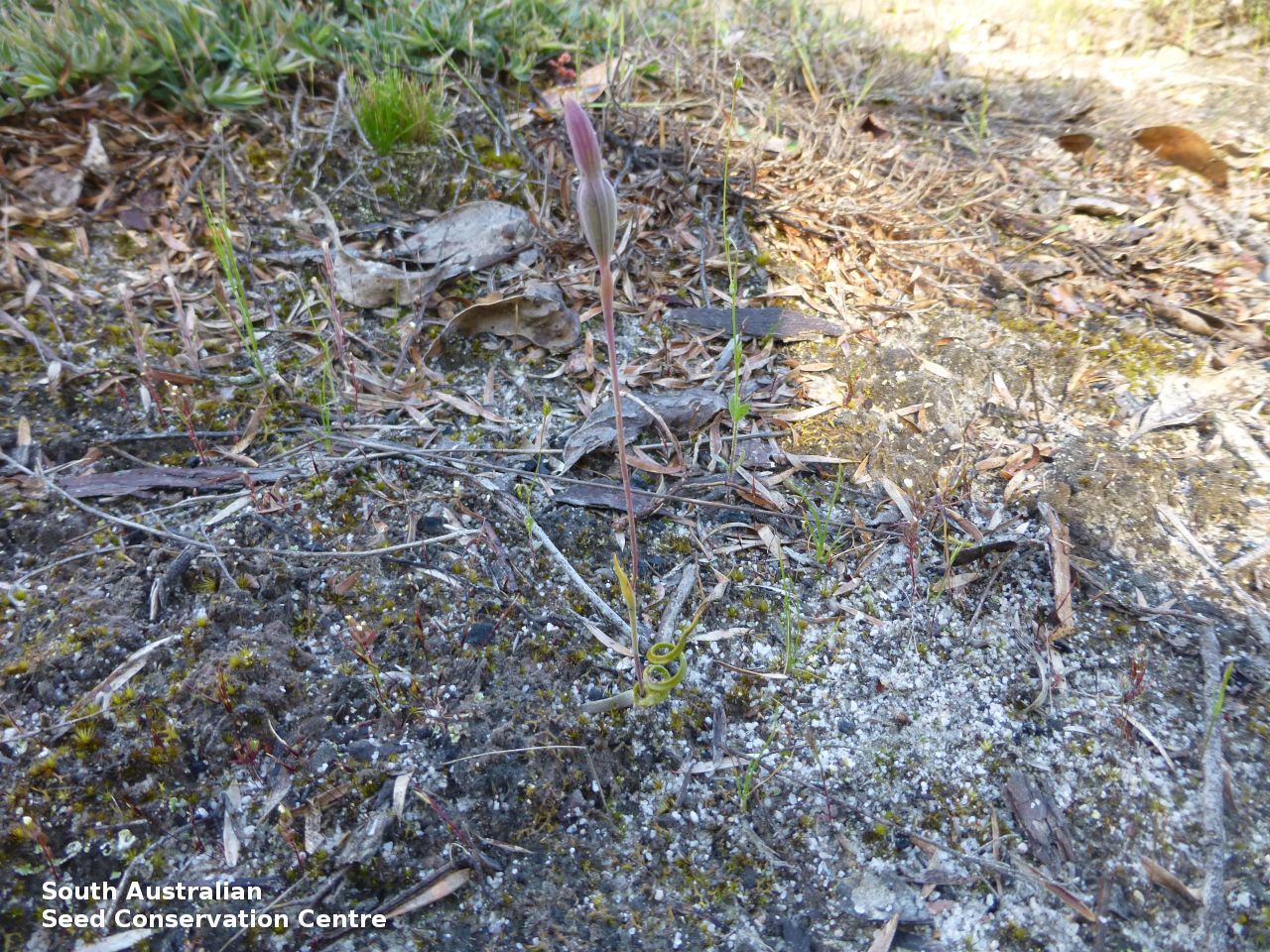
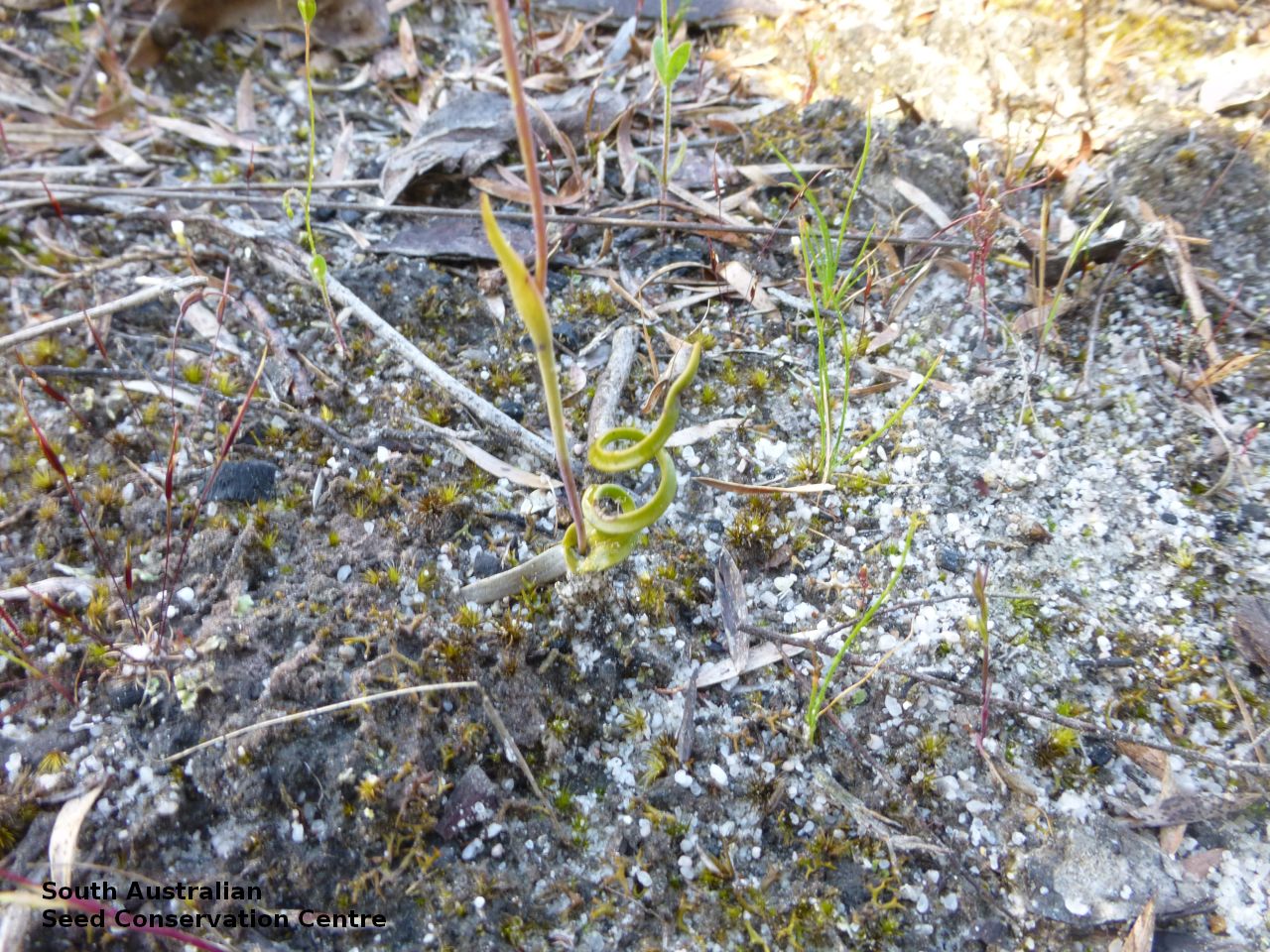
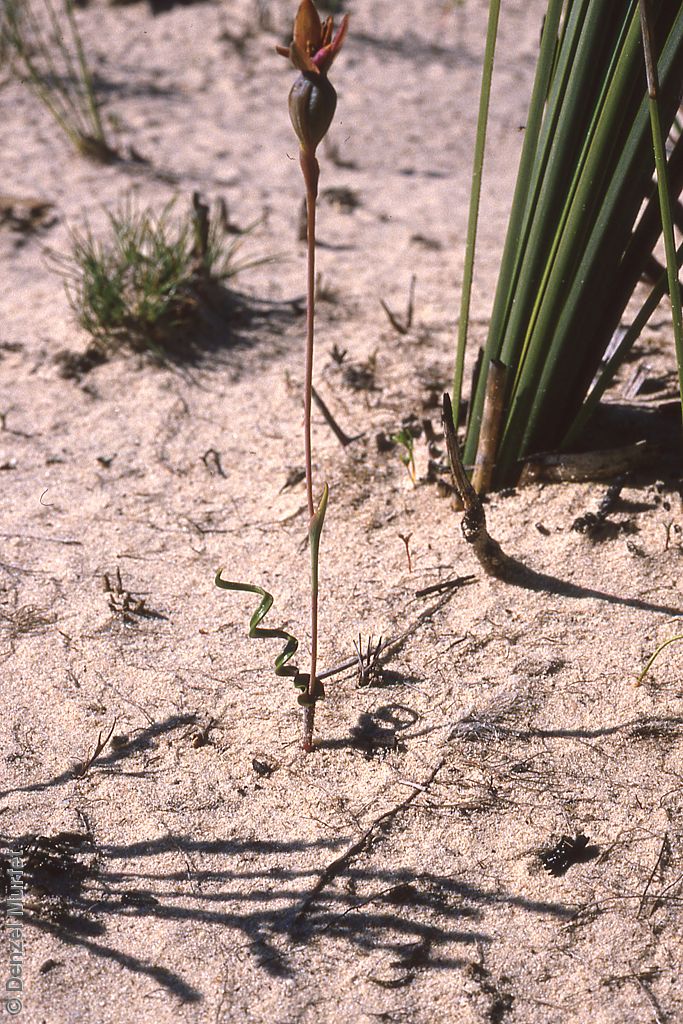
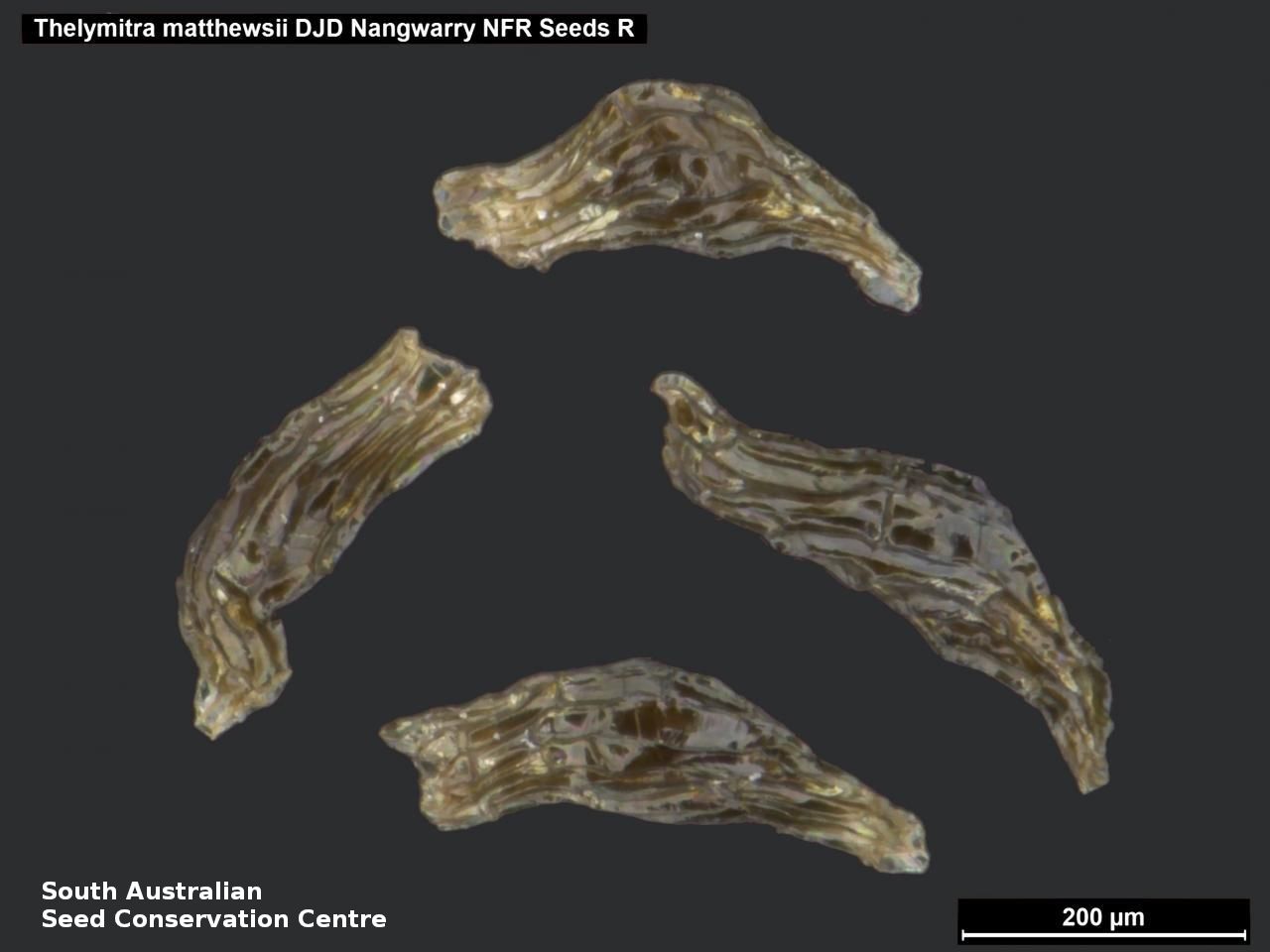
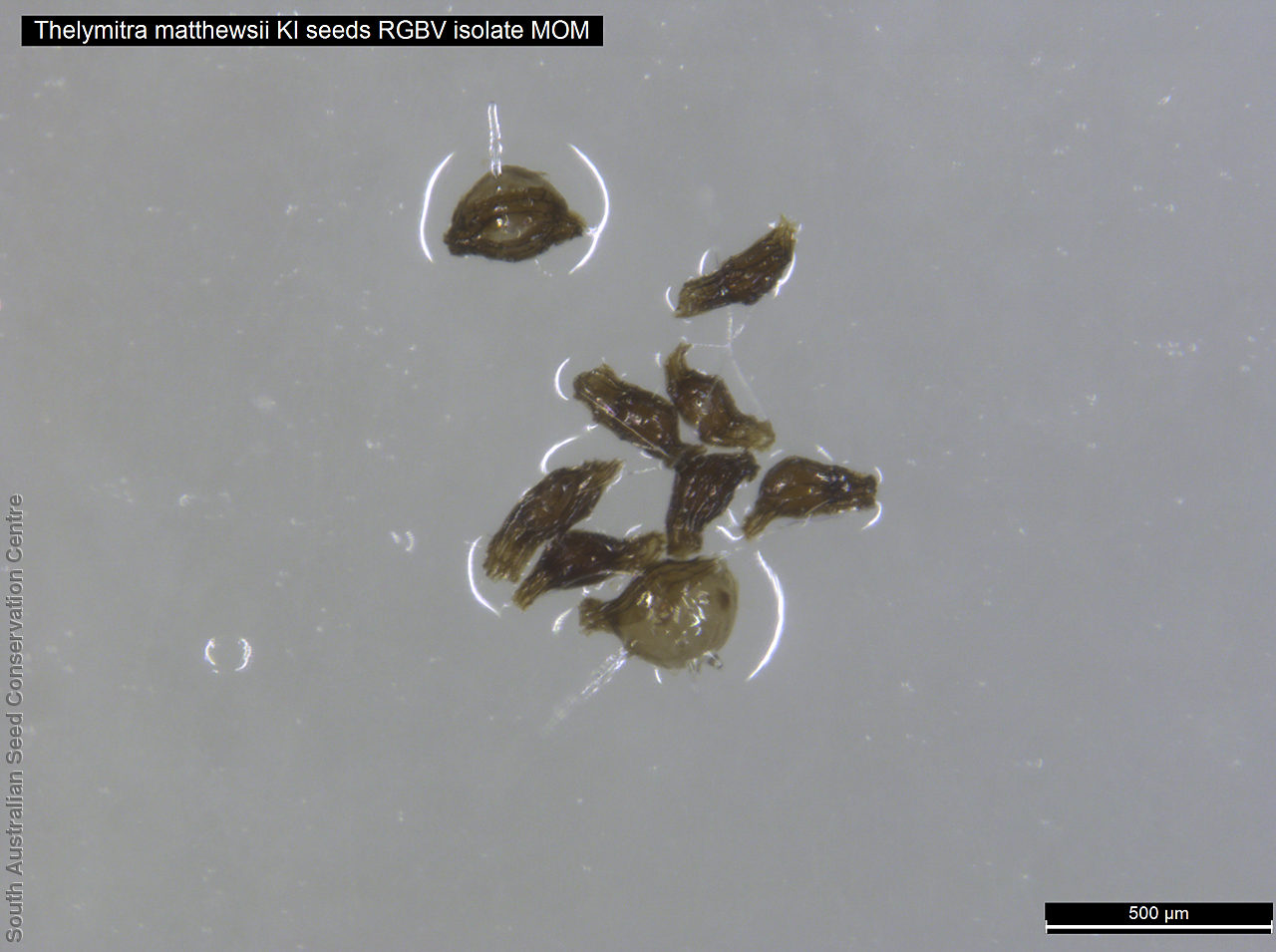
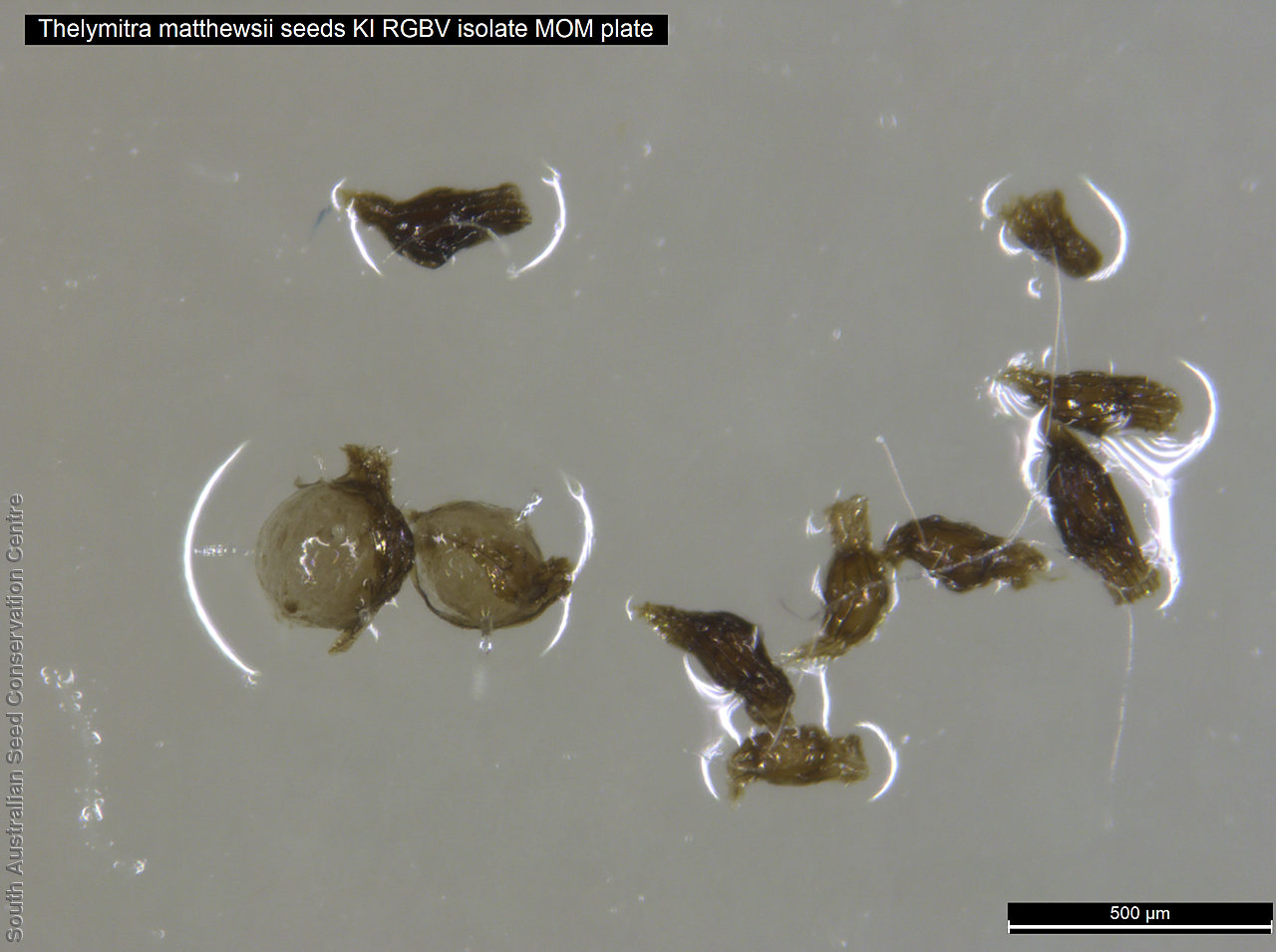
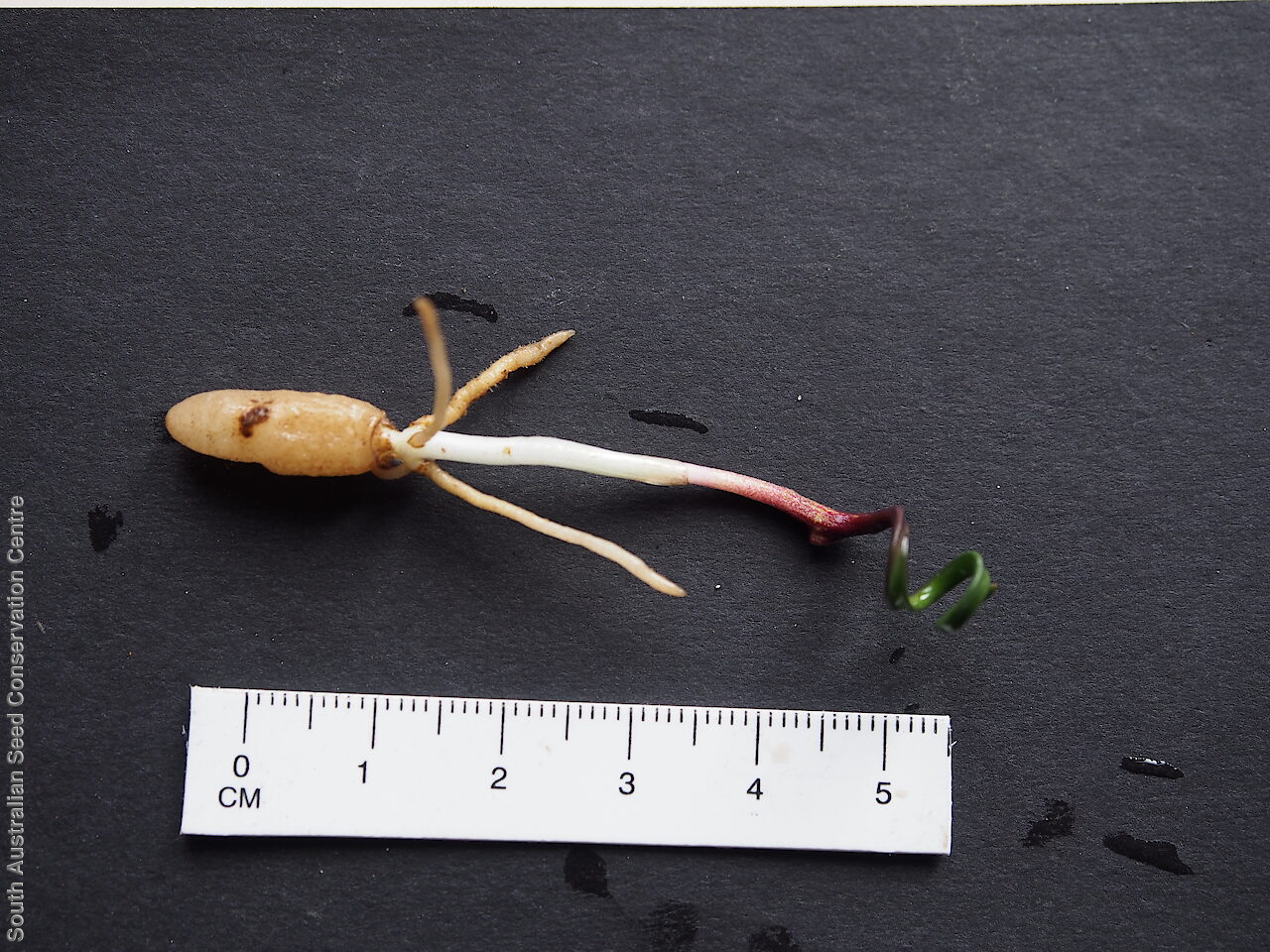

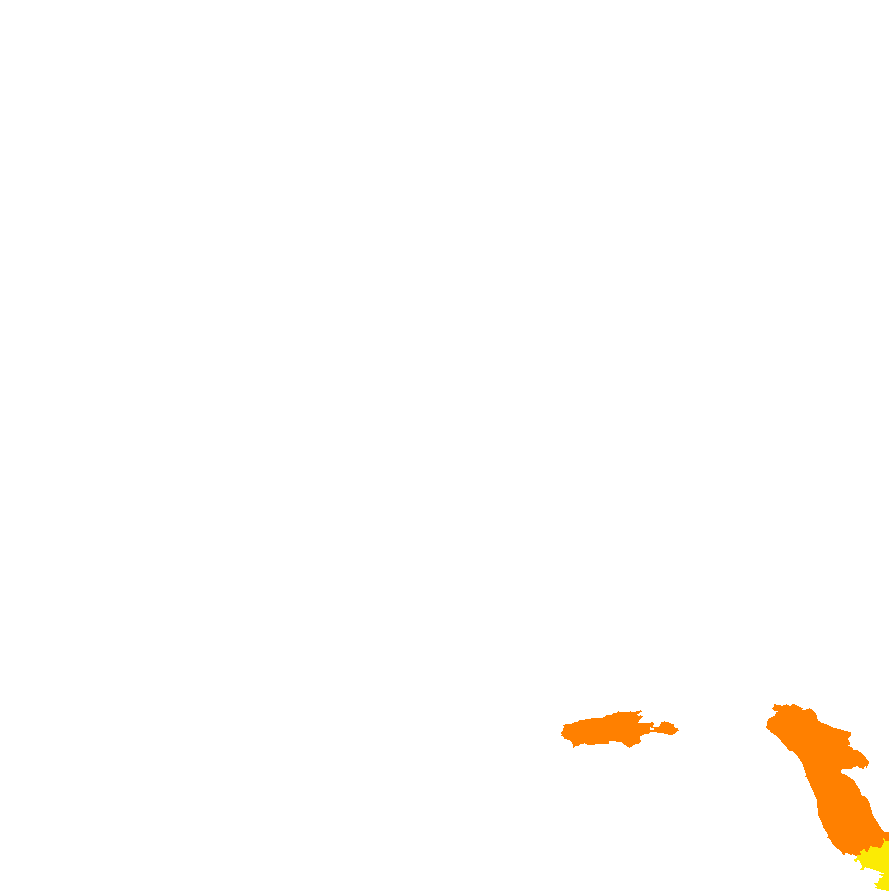
Botanical art
Prior names
Thelymitra daltonii
Etymology
Thelymitra from Greek 'thelys' meaning a bishop and 'mitra' meaning a headwear, hat, hence a bishop's mitre, referring to the sometimes plumed or decorated wings of the column, which is usually produced behind and over the anther in a hood-like projection. Matthewsii name in honour of Richard H. Matthews (1835-1913), a New Zealand amateur botanist who specialized in orchids and ferns.
Distribution and status
Found on the Fleurieu Peninsula, the west end of Kangaroo Island and the South-east in South Australia, growing on limestone, calcareous sands or ironstone gravel in mallee heathland. Also found in Victoria. Native. Very rare in South Australia. Rare in Victoria. Vulnerable in Australia under the EPBC Act.
Herbarium regions: Southern Lofty, Kangaroo Island, South Eastern, Green Adelaide
NRM regions: Adelaide and Mount Lofty Ranges, Kangaroo Island, South East
AVH map: SA distribution map (external link)
Plant description
Terrestrial orchid growing to 20 cm tall with a single (rarely 2) flower. This orchid is readily identifiable by its unique leaf which is ovate, irregularly lobe then narrowing into a spirally twisted lamina, to 6 cm long. The small flower is purple to reddish with darker stripes, the column is purple with a yellow apex and lateral lobes lack hair. Flowering between August and September. Fruits are brown papery ellipsoid capsule. Seeds are very small dark brown ellipsoid seed with an ovoid translucent brown mesh-like covering.
Seed collection and propagation
Collect seeds between October and December. Collect fat capsules as they start to dry and turn brown. Pods will split and release the seeds quickly and will require monitoring. To increase the chances of collecting mature pods, it is recommended that a small breathable bag (ie. Organza bags) be used to enclose the developing capsules. Place the capsules in a container that will hold fine seeds and leave to dry for a few weeks or until the capsule split. Then carefully hold the capsule and tap it gently to release the seeds. Store the seeds with a desiccant such as dried silica beads or dry rice, in an air tight container in a cool and dry place, refrigerator or in liquid nitrogen. Seed germination in Thelymitra species is difficult in the absence of symbiotic mycorrhizal fungi.
Fire response
Obligate re-spouter and re-seeder.
Longevity: ?? years
Time to flowering: ?? years
Recovery work
In 2020-2021 this species was assessed post-fire in 1 year old fire scars. A total of xx seeds have been collected & banked for a population inside the 2020 fire scar. Germination screening testing the response to fire cues will be undertaken in 2021.The project work is supported by the Australian Government through the Wildlife & Habitat Bushfire Recovery program through collaboration with La Trobe University.
| Location | No. of seeds (weight grams) | Number of plants | Date collected | Collection number Collection location | Date stored | % Viability | Storage temperature |
|---|---|---|---|---|---|---|---|
| BGA | 1,240,000 (0.213 g) | 12 pods | 17-Nov-2013 | D. Duval South Eastern | 10-Aug-2022 | 79% | -80°C |
| BGA | 47,900 (0.037 g) | 15-Oct-2021 | Flinders Chase NP Kangaroo Island | 10-Aug-2022 | N/C | -18°C, -80°C | |
| BGA | 360,000 (0.062 g) | 6 | 19-Nov-2013 | BTH3 South Eastern | 10-Aug-2022 | 61% | -80°C |
| BGA | 396,300 (0.309 g) | 20 | 16-Oct-2021 | Messent CP South Eastern | 10-Aug-2022 | N/C | -18°C, -80°C |
| BGA | 65,600 (0.051 g) | 2 | 12-Oct-2022 | Flinders Chase NP Kangaroo Island | 21-Jun-2023 | N/C | -18°C |
| BGA | 94,400 (0.074 g) | 16 | 30-Oct-2022 | Messent CP South Eastern | 21-Jun-2023 | N/C | -18°C |
Number of plants: This is the number of plants from which the seeds were collected.
Collection location: The Herbarium of South Australia's region name.
% Viability: Percentage of filled healthy seeds determined by a cut test or x-ray.